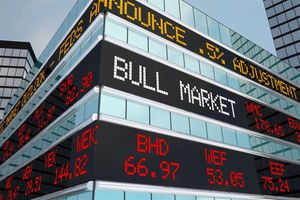Renewable diesel can bridge the gap as we work to electrify transportation
SOURCE: Booster Fuels
DESCRIPTION:
Even with electric vehicles (EVs) on the horizon, the greatest barrier to decarbonizing the transportation sector, particularly in the last mile, is clean energy infrastructure. While we all want to see more EVs on the road, today and for many years to come, charging infrastructure will limit the adoption of electric vehicles, even with new electric vehicles available for retail and fleet customers to purchase.
According to Booster, the leading mobile energy provider, one of the most effective ways for fleets to decarbonize their vehicles right now is to make the transition to renewable diesel.
What is Renewable Diesel?
At its core, renewable diesel is a direct substitute for diesel fuel and is refined from lower carbon and renewable sources, including vegetable oils and waste cooking oils. Renewable diesel can deliver up to 80% lower lifecycle emissions compared to petroleum diesel. Other benefits renewable diesel can provide fleets include better vehicle performance, reduced maintenance, cleaner fuel burning, and no odor. In short, it provides emissions reductions and better performance for fleet customers right now, if they can access it.
The Booster Solution
Today, less than 2% of gas stations carry sustainable fuels, presenting a supply chain issue for fleets to adopt renewable diesel directly from gas stations. To increase renewable diesel adoption with fleet customers, the opportunity lies with connecting with them directly and removing the burden of multiple trips to the gas station. Booster’s advanced platform meets the fleets where they are, simplifying the energy supply chain to deliver renewable energy from the producer directly to the customer.
Fleets behave differently from consumer vehicles. Fleet vehicles cluster at night during their downtime, they drive in predictable routes, and are more likely to be connected to telematics to optimize their routes. Fleet operations present a huge opportunity to decarbonize last-mile travel, if their fueling is optimized to meet them where they are and take advantage of renewable diesel.
Rapid Renewable Diesel Growth in California
In late 2021, Booster began carrying renewable diesel products, and by the end of November that year, Booster converted half of its fleet customers to renewable diesel in California. Today, Booster’s advanced technology and energy delivery platform has helped convert more than 60% of its customers to renewable diesel, delivering more than 200,000 gallons of renewable diesel to more than 1,400 vehicles in California, cutting CO2 emissions by more than 500,000 lbs. of CO2 every week. In the Bay area alone, Booster has converted 95% of its customers to renewable diesel.
Preparing for the Future
Renewable diesel presents a compelling and viable path to cutting carbon at the last-mile level now. As clean energy infrastructure matures and expands over the next decade, Booster’s energy agnostic Unified Energy Network will be ready to deliver clean energy and further decarbonize the transportation sector through electrification, hydrogen and other clean energies.
KEYWORDS: electric charging, renewable fuel, renewable diesel, infrastructure, Booster Fuels







